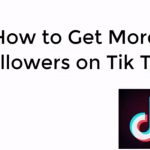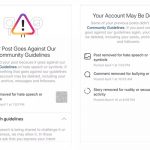In-House Influencer
Micro And Nano Influencers
Influencer marketing has garnered a lot of interest over the last few years. In fact, in the last three years, the number of Google searches for “influencer marketing” has increased by 1500%. This shows that the future of influencer marketing is ripe with opportunities. Here are top influencer marketing predictions for the future of this growing field in 2021. You can use the tips to improve your own business or brand.
Influencer Marketing Predictions in 2021
1. Influencer Marketing Will Continue To Grow Globally
Influencer marketing is an industry estimated to be worth $15 billion by 2022, almost double its value in 2019 ($8 billion). Despite the COVID-19 pandemic and its impact on the economy, our recent whitepaper study indicated positivity, highlighting the industry’s resilience and continued growth despite the global economic downturn.
Marketers are increasingly putting their faith and budgets in multi-channel influencer campaigns and seeing the value in their creative content. Not only that, but it’s clear that creative influencer talent is breaking ‘into the mainstream’: providing authentic reflections of the values and principles that consumers hold as well as making forays into the broader marketing and advertising channel mix.
With signs that the ‘new normal’ is to embrace the uncertainty, brands and advertisers will continue to share their message to their target audiences online, where advertisers can authentically connect with their audiences through influencer marketing, something that is set to continue to grow significantly.
Almost three-quarters of all marketers (73%) are now allocating a greater proportion of their resources to influencer marketing than they were a year ago. Marketers’ rising confidence in influencer marketing is increasingly seeing them explore additional channels for this activity.
Influencer marketing is one of the most promising segments of the digital marketing mix and a sector we will continue to see thrive globally throughout 2021.
Also Read:
Why is your brand failing at influencer marketing ?
2. Influencer Marketing Predictions: A Focus on Engagement
It has long been said that follower count does not translate to engagement numbers, and this was never truer than in 2020. With attention spans now dwindling and Zoom fatigue setting in, brands still want to continue to engage audiences in a meaningful way.
Next year, brands will continue to leverage talent who already have high social media engagement on their channels through more effective virtual concerts and livestreams. Even once we are able to gather again in person, brands will continue their focus on engagement numbers, hoping to maintain the momentum they’re created.
3. Emergence of Influencer Networks
The future of influencer marketing is all about the collective. Instead of individuals, marketers may begin to group influencers based on whom they are associated with. After all, influencer marketing is about associating with the right people.
If you’re related with an influencer, your brand reputation grows based on how much authority they have. Likewise, an influencer’s reputation depends on which brands they endorse. It’s like creating power centers of influence for each niche.
Each of the influence centers linked to each other because many niches overlap. Take for example a brand that sells sunscreen lotion.
For such a brand, the obvious choice would be to reach out to influencers in the fashion, beauty, and lifestyle niches. However, they could also reach out to influencers in the travel and sports industry.
The future of influencer marketing places an emphasis on the interconnectedness of different niches. The influencers who possess the power to transfer ideas between different groups will be the most influential ones.
To evaluate influencer networks, brands may have to invest more time in influencer evaluation. Platforms like Fourstarzz Media will also make it easier for marketers and brands to find information about influencers.
On the platform, you can find profiles for each influencer. It also includes a list of the most notable followers for each influencer.
Micro And Nano Influencers Will Steal Spend From Macro Influencers.
At a lower price point, micro- and Nano-influencers allow brands the opportunity to have dozens of diverse content studios without breaking the bank. Plus, with boosting capabilities advertisers can target influencer content to strategically reach the desired audience.
Influencer content should not live in a silo (and branded content advancements make sure it doesn’t), thus allowing brands the opportunity to have a stronger ROI from influencer partnerships. Also, from an organic reach perspective, micro- and Nano-influencers typically generate a higher engagement rate thanks to carefully curated audiences. Their followers frequently engage with their content and often turn to them as trusted resources.
Increase of In-House Influencer Programs
As more brands realize the importance of collaborating with influencers, they are seeking new ways to work with them. At the same time, they realize that building long-term associations with influencers is essential for better marketing.
That’s why the future of influencer marketing lies in in-house influencer programs. Instead of content distribution, in-house influencer marketing focuses on building relationships with people. This arrangement also allows brands to work more closely with influencers.
Currently, Macy’s has one of the biggest in-house influencer programs for their employees. As a part of their program, Macy’s Style Crew, they have turned 300 employees into their brand ambassadors.
As a part of the program, Macy’s employees receive a commission for each sale made. When employees are accepted into the program, they get access to most of the store’s products for free. Because the program has been a huge success, Macy’s is looking to make it bigger this year.
In-house influencers bring loyalty and a sense of relatability that other influencers can’t match. Therefore, their endorsements seem more authentic and genuine. These are the qualities that will shape the future of influencer marketing.
5. Diversity in Influencer Marketing
Conversations around diversity within the industry have become increasingly urgent, with influencers across the globe (especially in the UK and US) extremely aware that issues surrounding diversity in brand partnerships must be addressed if influencer marketing is going to thrive — and continue to be the relatable reflection of real-life that consumers want.
By partnering with the right creators and listening to what they have to say, every brand has a better chance of sharing the kind of diverse messaging that both help our society and drives consumer action.
6. Influencers Will Test New Platforms
With TikTok taking off in 2020, it became clear that people are using apps now more than ever for social entertainment. So, TikTok influencers will be more and more essential for very brand. Consumers are looking for a place to escape with content that is engaging and light-hearted, which can be seen particularly through video.
Plus, the most popular TikToks, Reels or Stories don’t fully produced, but instead offer authentic, real-time entertainment. Once this new style of relatable content goes fully mainstream, marketers and influencers will test it on various channels. Something might resonate more on IGTV vs. TikTok, so marketers shouldn’t be afraid to dabble on different platforms to maximize their investment.
Expect influencer content to also expand beyond social media channels (pre-roll, digital ads, etc.) as short-form video continues to spike in popularity.
As you harness the opportunities within these predictions, continue to customize your influencer plans with an extensive vetting process and tailored messaging.
7. The Rise of CGI Influencers As Influencer Marketing Predictions
The entry of CGI influencers into the influencer marketing industry has changed the way brands view collaborations. For the uninitiated, CGI influencers are influencers who are created with the help of computer-generated imagery.
Manufactured in the virtual world, programmers and designers work for hours to create each scene from a CGI influencer’s life. On their social media channels, CGI influencers can be seen posing at exotic locations.
Riding in on the curiosity that CGI influencers evoke, many luxury brands have started collaborating with them. Lil Miquela, one of the most popular CGI influencers, has already partnered with Calvin Klein, Diesel, and Prada.
CGI influencers became increasingly popular for brands because they allow brands to completely control how their products advertised. The unpredictability that comes with real-life influencers can be avoided.
So, where is the future of influencer marketing going with CGI influencers? Adam Rivetz, co-founder of the influencer marketing company paid, has an interesting take on the future of influencer marketing. He believes that influencers will use CGI technology to create their digital avatars.
“They could make a duplicate version where it’s like, ‘This is my real-life feed where I post certain things, but then here’s my avatar of myself where maybe I work with different brands or do more risqué things,’” Rivetz said in an interview.
He added that we might get to see games and apps involving CGI influencers. Also Read:
Virtual Influencers, Human Alternatives in the Spread of Coronavirus
8. Authenticity Reigns Supreme
We’ve been shouting for years to carefully select influencers who already—or would naturally—talk about our clients. In 2021, this will be more important than ever as influencers are under microscopes from their followers, trolls and keyboard warriors alike. To avoid going viral for the wrong reasons, authenticity will be even more important in 2021.
Ready for the Future of Influencer Marketing ?
Whether these predictions come to fruition or not, it’s for sure that the future of influencer marketing is ripe with opportunities. Brands will need to adapt to the changing trends and strategies to stay relevant in the influencer marketing industry in the future.





























